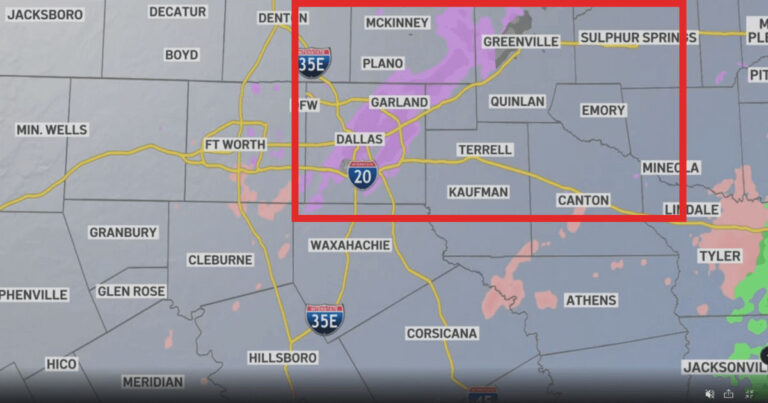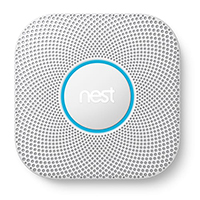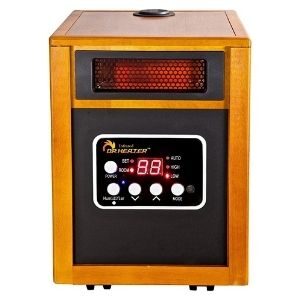When huge winter storms are wrapping their snowy, icy arms around the US winter storm warnings get sent out. Winter storm warnings mean more than just colder temperatures. They mean dangerous conditions you need to prep for. Here's what you need to know to stay warm and safe.
How to Weather Winter Storm Warnings
For over 11 years, SafeWise experts have conducted independent research and testing to write unbiased, human reviews (not robots). Learn more.
Snow storms are sweeping though the country. Learn how to prep your home and drive safely out there. Plus, learn what a winter storm warning is and what you should do if your area is issued one.
By signing up, you agree to our Terms and Conditions and Privacy Policy.

A winter storm warning. Image: SafeWise
What is a winter storm warning?
A winter storm warning means that there will be significant ice, snow, blowing snow, sleet, or a combination of these and that you need to take action to stay safe, according to the National Weather Service (NWS).
This year, the NWS has given its Winter Storm Warning system a major makeover, making it easier for everyone across the U.S. to understand and prepare for winter weather. They've rolled out a new, color-coded map to guide the issuing of winter storm watches and warnings. It's all about keeping things simple and consistent. Pink areas on the map are winter storm warning areas.
Qualifications for winter storm warnings have changed, too. In the past, each of the 122 local NWS offices had their own set of rules for their area, which could get a bit confusing. Now, they're all following the same playbook set by the main NWS office. This means no matter where you are in the country, the criteria for warnings and watches will be more uniform.
Let's take a peek at how it works: Different areas have different snowfall thresholds for warnings. For example, in East Tennessee, it takes just 3 inches of snow to trigger a winter storm warning. But in the snow-loving Wasatch Mountains of northern Utah, the bar is set at 18 inches.
This update aims to streamline the whole process, making sure that winter storm information is clear and consistent nationwide. So, whether you're planning a trip or just cozying up at home, keeping an eye on the forecast is key to staying safe and prepared as the winter weather rolls in.
Drive safe
That adds up to poor driving conditions in many areas of the country (we're looking at you southern states).
Just stay home. And if you have to drive stick to well-traveled city streets to avoid ice patches on highways and bridges.
For more, check out our best winter driving tips.
Make sure your carbon monoxide detectors are working
If you use anything other than electric or solar to keep your home warm, make sure your carbon monoxide detector is working properly. Wood, natural gas, propane, and other heating fuels can create this deadly, colorless, odorless gas. You need a reliable warning system if carbon monoxide is present in your home.
Learn more in our carbon monoxide guide.
Stay warm
Amazon.com list price as of post date. Read full disclaimer.
Heating your home can be a challenge as the temperatures dip. Here are some ways to stay warm:
- Use one room as your "warming station."
- Have pets, family members, and roommates stay in this room (with the doors closed) as much as possible. The body heat will keep the room toastier.
- Hang quilts or blankets over windows and open doorways to insulate your warming station.
- Make your ceiling fans rotate counter clock-wise to push warm air down from the ceiling to your level. There's a switch that changes the fan's direction just below the blades.
- Use special electricity-free heating blankets.
Don't use your stove or oven as heating

Image: Ron Lach, Pexels
While you can take advantage of cold weather to up your baking game and supplement the warmth in your house, don't use your stove or oven as a heating source. Leaving your stove or oven on can increase your chances of fire, accidental burns, and CO poisoning.
Give your space heaters space
Be sure to keep at least three feet of space clear around your space heaters to prevent fires.
Check out our other space heater safety tips.
Video: Space Heater Tips
Subscribe to our YouTube channel and learn how to protect your home, loved ones, and belongings.
Related articles on SafeWise
Disclaimer
Product prices and availability are accurate as of the date/time indicated and are subject to change. Any price and availability information displayed on Amazon at the time of purchase will apply to the purchase of this product. Safewise.com utilizes paid Amazon links.
Certain content that appears on this site comes from Amazon. This content is provided "as is" and is subject to change or removal at any time.
†Google, Google Nest, Nest Protect, and other related marks are trademarks of Google LLC.
Recent Articles






